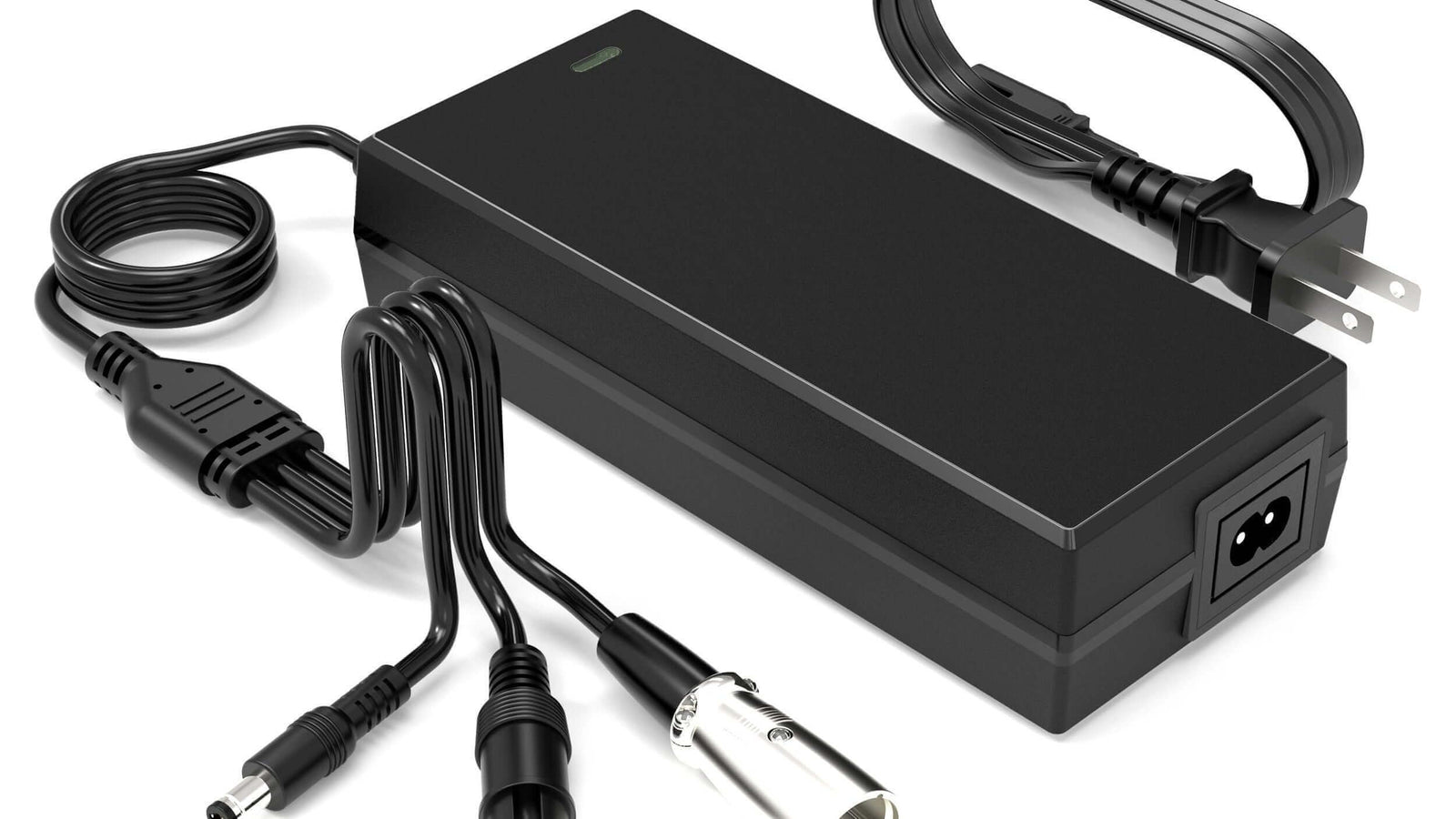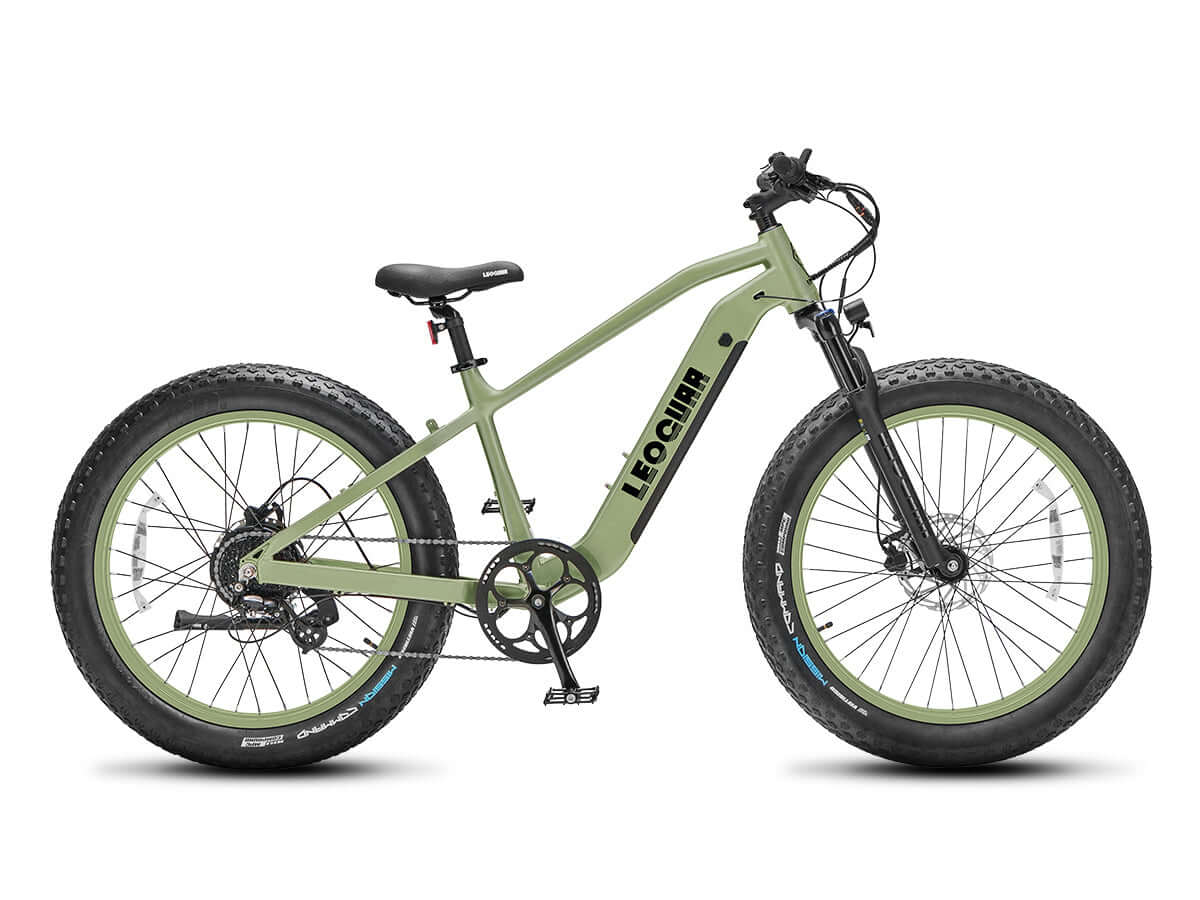
Battery Charger E Bike: Complete Lithium Charging Guide
Understanding Your E-Bike's Power Source
Your e-bike's battery charger is more than just a plug and cord. It keeps your bike's most expensive part working properly. Getting the right charger matters for performance, battery life, and safety. The world of chargers might seem hard to understand, but it comes down to three simple ideas.
To pick the right lithium bike battery charger, you need to:
1. Match your battery's exact specs - the right voltage and connector plug.
2. Choose the charging speed you want - this depends on the charger's amperage.
3. Check for safety certifications - these protect you from dangerous problems.
We'll help you understand these details, pick the perfect charger, use it safely, and fix common mistakes.
Reading Charger Numbers and Labels
Learning the numbers on your charger and battery label helps you become a smart e-bike owner. This knowledge protects your money and prevents costly or dangerous mistakes. Let's look at what makes your battery charger e bike work.
Voltage: Getting the Perfect Match
Think of voltage like a key. It must be exactly the right shape to fit your battery's lock. Your charger's output voltage must match what your battery needs perfectly. Using the wrong voltage will damage your battery, charger, or both.
You'll see two voltage numbers: your battery's normal voltage and your charger's output voltage. These must work together correctly.
- A 36V battery needs a 42V charger.
- A 48V battery needs a 54.6V charger.
- A 52V battery needs a 58.8V charger.
- A 72V battery needs an 84V charger.
Always check your battery's voltage first, then pick a charger that matches. This rule never changes.
Amperage: How Fast Your Battery Charges
Amperage, or Amps, controls how quickly your charger fills up your battery. Higher amps mean faster charging - a 4-Amp charger works about twice as fast as a 2-Amp charger.
But faster charging has a downside. Quick charging makes more heat, which hurts your lithium battery over time. Modern e-bike batteries can handle faster charging, but using very high amps too often can stress the cells. Finding the right balance gives you speed without too much heat.
Connector Plugs: Making Sure Everything Fits
The last part of matching chargers is the physical plug. Sadly, there's no standard plug that works for everyone. Different brands use different plugs, so you must make sure your new charger fits your battery's port.
Common plug types include:
- XLR (3-Pin): A strong, round connector used on many e-bike systems.
- DC 2.1mm / 2.5mm (Barrel Plug): A simple, round plug like those on laptops - the pin size matters.
- RCA: A basic, single-pin plug that's less common on newer e-bikes.
- Rosenberger: A high-quality magnetic connector used by brands like Specialized.
Before buying any battery charger e bike, look closely at your battery's charging port to make sure the plugs match perfectly.
Three Steps to Pick the Right Charger
Now that you know the basics, choosing the right charger becomes easy. Follow these three steps to buy with confidence.
Step 1: Check Your Basic Needs
This step matters most. Look at your current battery or charger label. Write down two important things:
- The Voltage: Find the output voltage (like 54.6V) on the charger or normal voltage (like 48V) on the battery.
- The Connector Type: Take a clear photo of the plug to compare when shopping.
Getting this right keeps you safe and makes sure everything works together. Contact your e-bike maker if you're not sure about the specs.
Step 2: Pick Your Charging Speed
Next, decide how fast you need to charge. This depends on how you ride - do you commute daily and need quick charging, or do you usually charge overnight? Your amp choice controls this speed.
| Charger Type | Amperage (Amps) | Typical Charge Time (for a 15Ah battery) | Best For |
|---|---|---|---|
| Standard Charger | 2A | 7-8 hours | Overnight charging, maximizing battery longevity, gentle on cells. |
| Fast Charger | 4A - 5A | 3-4 hours | Frequent riders and commuters needing quicker turnarounds. |
| Rapid Charger | 6A+ | 1.5-3 hours | Professional use or specific needs; use with caution and ensure the battery is rated for it. |
Most riders do best with a 2A or 4A charger for good speed and long battery life.
Step 3: Look for Safety Marks
A cheap charger without safety testing isn't a good deal - it's dangerous. Lithium battery fires don't happen often, but they can destroy everything. The best way to prevent this is making sure your charger has been tested by real safety experts.
Look for these marks on your charger:
- UL (Underwriters Laboratories): This is the best standard in North America - UL testing checks for fire and shock dangers.
- CE: This mark shows the product meets safety standards for Europe.
Recent problems, including more fires from lithium batteries, have made cities like New York require UL certification for all e-bikes and chargers sold. This shows the industry now puts safety first. We strongly suggest only buying a battery charger e bike with real UL or CE certification.
Fixing Common Charging Mistakes
Wrong information about lithium battery care spreads easily. Let's separate truth from lies to protect your battery and keep you safe.
Myth: Any charger that plugs in will work.
Fact: This is one of the most dangerous wrong ideas. Matching voltage is critical, as we explained. Plugging a 52V battery into a 48V charger will either fail to charge or permanently break the battery's system or even cause a fire. The plug shape means nothing without the right electrical specs.
Myth: Fast charging always ruins batteries.
Fact: Not always true. "Fast" depends on your battery size - charging a big 20Ah battery with a 4A charger is actually gentle. Damage comes from too much heat and using amps that are too high for your specific battery design. A good battery with a proper certified "fast" charger (like 4A or 5A) is usually safe and works well. Slow charging (2A) is always gentlest, but moderate fast charging works for most people.
Myth: You must drain the battery completely before charging.
Fact: This "memory effect" was a problem with old Nickel-Cadmium batteries, but doesn't apply to modern lithium batteries in e-bikes. Actually, the opposite is true - lithium cells work best when kept between 20% and 80% charge. Running from 100% to 0% regularly will make your battery die much sooner.
Myth: It's fine to leave it plugged in for days.
Fact: Any good battery charger e bike stops charging when the battery is full (the light turns green). But leaving it connected can still be risky. The best practice is unplugging the charger from both the wall and battery when charging finishes. This prevents any charger problems and stops unnecessary stress on the battery for maximum safety.

How to Charge Safely and Smart
Good charging habits matter just as much as picking the right equipment. Follow these tips to stay safe and make your battery last longer.
Set Up a Safe Charging Area
Where you charge matters a lot. Always charge in a dry, open space with good air flow on a surface that won't burn, like concrete. Never charge on carpet, sofas, or beds, and keep the charger and battery away from things that can catch fire. Don't charge in very hot or freezing cold places - extreme temperatures hurt battery cells.
Follow the Right Steps
To prevent small sparks at the connector, always do this:
1. Connect: Plug the charger into the battery first.
2. Power On: Plug the charger into the wall second.
When done, do the opposite: unplug from the wall first, then from the battery.
Watch the First Charge
When using a new charger for the first time, stay nearby while it charges. Check both the charger and battery by touching them sometimes - the charger will get warm, which is normal. But if either gets too hot to touch comfortably, unplug it right away. This could mean something is wrong or they don't work together.
Get Ready for Long Storage
If you won't ride for a month or more (like over winter), don't store the battery full or empty. For best health, charge or drain the battery to between 40% and 60%. Store it inside in a cool, dry place away from the bike.
Key Points to Remember
Your battery charger e bike isn't just an extra part - it's important technology that affects your bike's performance, your battery investment, and your safety. By learning about voltage, amperage, and safety certification, you can make smart decisions instead of guessing.
Remember these simple rules: always match the specs, pick charging speed that fits your life, and never skip safety by choosing UL or CE certified products. Take care of your charger and battery, and they'll give you thousands of miles of reliable, powered rides.
Frequently Asked Questions
Q: Can I use a car battery charger for my e-bike battery?
A: No, never use a car battery charger for your e-bike. Car chargers are designed for lead-acid batteries and will damage or destroy your lithium e-bike battery. Always use a charger specifically made for lithium batteries with the correct voltage.
Q: How do I know when my e-bike battery is fully charged?
A: Most chargers have a light that changes color when charging is complete - typically from red to green. Your battery may also have indicator lights that show the charge level. Always refer to your specific charger and battery manual for exact indicators.
Q: Is it bad to charge my e-bike battery every day?
A: No, daily charging won't hurt modern lithium batteries. In fact, keeping your battery between 20-80% charge is better than letting it drain completely. Charge whenever convenient - lithium batteries don't have memory effects like older battery types.
Q: What should I do if my charger gets very hot while charging?
A: Unplug the charger immediately from both the wall and battery. Some warmth is normal, but if it's too hot to touch comfortably, stop using it. This could indicate a faulty charger or compatibility problem. Contact the manufacturer before using it again.
Q: How long should an e-bike battery charger last?
A: A quality charger should last several years with normal use. Signs it needs replacement include: not charging the battery fully, getting extremely hot, damaged cords or plugs, or the indicator light not working properly. Always replace with a charger that matches your battery's specifications exactly.









































Leave a comment